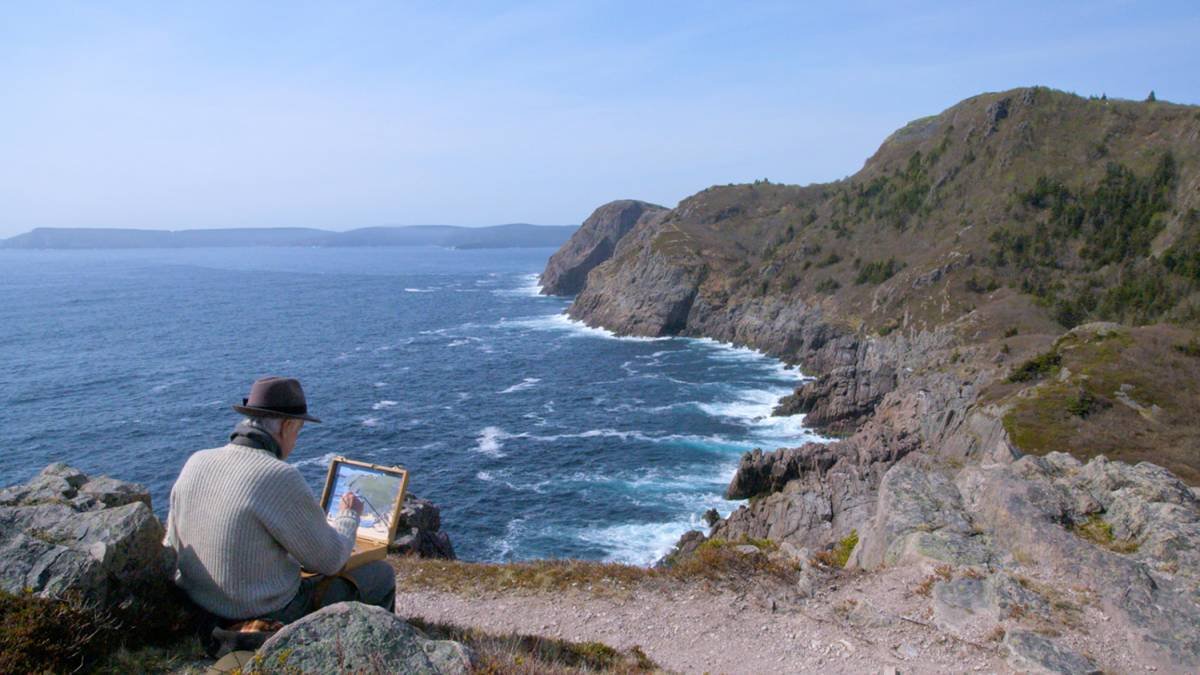His glowing canvases are familiar to all of us, but a new documentary reminds us that the work of Lawren Harris was illuminated in ways history tends to forget. “I always adored them, but I didn’t know about his spiritual background and his intent in the paintings,” says artist turned filmmaker Nancy Lang, whose film Where the Universe Sings: The Spiritual Journey of Lawren Harris, directed with Peter Raymont, opens in Vancouver on Friday (January 27). The clue is right there in the title. Lang and Raymont’s movie suggests that Harris’s interest in the mystic school of theosophy—quite vogueish at the time he joined Toronto’s Lodge of the International Theosophical Society in the early ’20s—provided a theoretical backbone to his trajectory as an artist, informing the radiant visions he eventually produced.
“Harris believed that beauty was something that would lend to spiritual inner stability and solace,” Lang tells the Straight, in a call from Toronto. “He meditated, he did yoga, he would have his granola every morning.” Theosophy, she adds, “was applied to his art in that he was trying to find that sense of the divine. He was deliberately setting out to create paintings that take you to a place that’s eternal and more enduring, that’s beyond our everyday lives, that’s timeless. They’re almost like altarpieces, some of them. You can stand in front of them and meditate.”
Making an appearance in Where the Universe Sings, actor (and avid collector) Steve Martin speaks of Harris’s “metaphysics of landscape”, while author-historian Lisa Christensen appraises 1929’s iconic Mount Robson with the words: “He could give you the absolute most simple path to follow to become as spiritually enlightened as he wanted to be, by following theosophy. He could communicate that to you through his paintings.” Lang and Raymont are also careful to not belabour the point. Where the Universe Sings offers a crisp overview of Harris’s life and development as an artist, from his formative time depicting Toronto’s working-class neighbourhoods to the internationally renowned nature studies he would produce in his peak Group of Seven years during visits to Lake Superior, the Arctic, and the Rockies. It was in Alberta, Lang candidly reveals, that Harris would have a full-bore encounter with the mystical. “There are several people who were with him and who talk about how he had an ecstatic moment when he went up to Mount Lefroy, above Lake Louise,” she says. “He did start speaking in tongues.” That information was imparted to the filmmakers by people including Christensen, though it isn’t widely known. “Those kinds of things didn’t get shared easily with his friends,” she says. “Everyone respected his desire for privacy.”
Perhaps equally intriguing is Harris’s turn to abstract composition, which he pursued until his death in Vancouver in 1970. In Lang’s view, it’s here, in a house overlooking Jericho Beach, that the aging artist produced the purest expression of his spiritual journey and an attendant yearning, perhaps, for its next vital step. “Are you frightened of dying?” Harris is asked in a rare clip. “No, I think it’ll be darned interesting,” he replies. “There could be a whole movie on just his abstract work,” Lang says. “It’s really fascinating what he did. Those abstracts, at the end, they’re not of this world anymore. It’s not a mountain or tree. It’s just a light-filled space.”
Georgia Straight, January 2017
